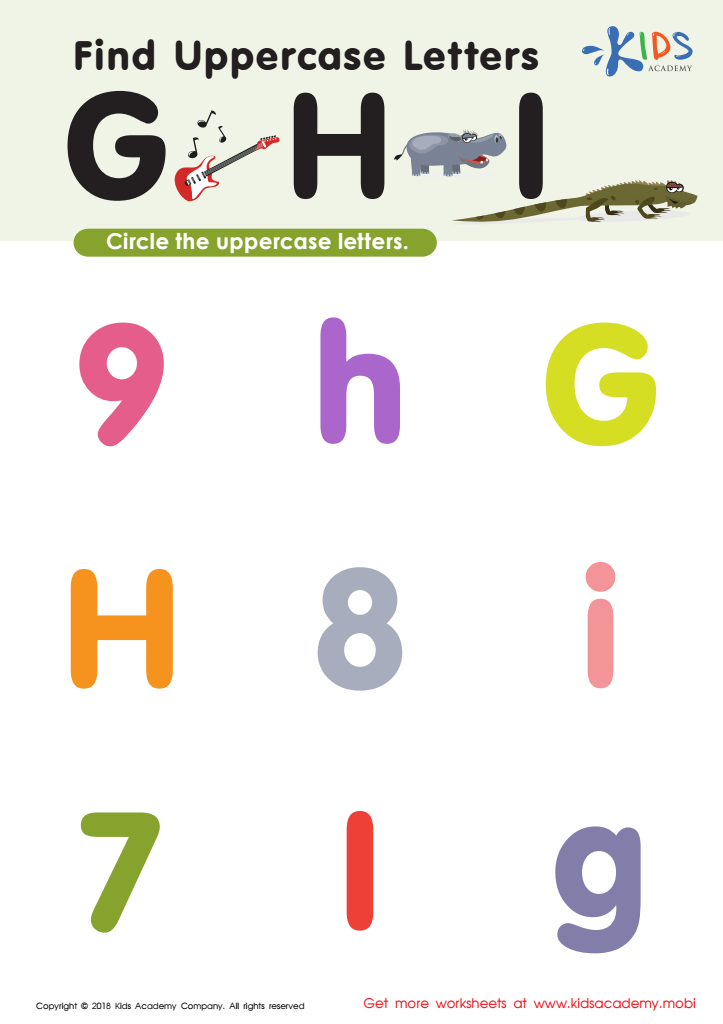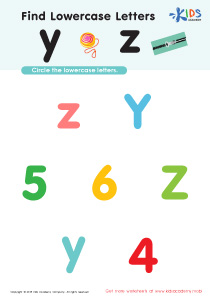Alphabet familiarity Normal Uppercase Letters Worksheets for 4-Year-Olds
4 filtered results
-
From - To
Enhance your child's alphabet familiarity with our engaging Uppercase Letters Worksheets designed for 4-year-olds! These fun, printable resources help little learners identify and recognize uppercase letters through colorful activities that promote early literacy. Each worksheet encourages children to trace, match, and color letters, making learning interactive and enjoyable. Ideal for parents and educators, these worksheets provide essential practice that lays the foundation for reading and writing skills. Encourage your child to explore the world of letters with our thoughtfully crafted materials that cater to their developmental needs. Unlock the joy of learning the alphabet today! Explore our collection now!


Find Uppercase Letters G, H, and I Worksheet


Find Uppercase Letters Worksheet


Find Uppercase Letters J, K, and L Worksheet


Find Uppercase Letters A, B, and C Worksheet
Alphabet familiarity, particularly with uppercase letters, is crucial for 4-year-olds as it sets a foundation for literacy and communication skills. Recognizing uppercase letters helps children understand the alphabetic principle, which is the concept that letters represent sounds. This foundational knowledge is essential for developing reading and writing abilities.
Moreover, uppercase letters are prominently used in many contexts, including signs, books, and educational materials. Familiarity with these letters aids children in identifying and decoding words, which boosts their confidence and enthusiasm for learning. It fosters an early love for reading, encouraging them to explore stories and engage with different types of texts.
Additionally, understanding uppercase letters enhances fine motor skills as children learn to write them. By practicing letter formation, they develop hand-eye coordination and dexterity, which are vital for their overall academic journey.
For teachers and parents, fostering familiarity with uppercase letters supports language development, social interaction, and cognitive skills. Engaging with children through fun activities like songs, games, and storytelling embeds these skills in an enjoyable context. Ultimately, a strong grasp of uppercase letters is a stepping stone to higher literacy levels, critical for future academic success.
 Assign to My Students
Assign to My Students
















